No courses in the enrolment list.
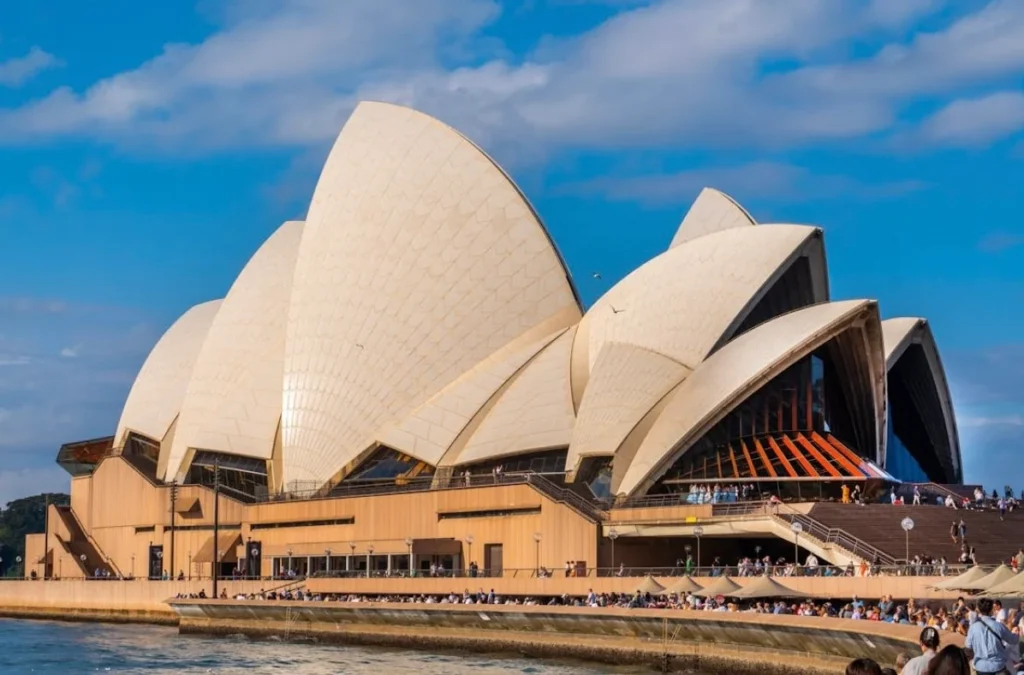
Embarking in Australia must be an arduous decision for some people who have the intention to go overseas for job purposes, tertiary education, or a change of life. Congratulations on your decision to start a new chapter in your life. It’s a decision that will leave you incredible memories and daunting experiences as well.
Key Takeaways
- Checklist before landing.
- All things you should know after landing.
- Discover Australia in your way.
- Sydney is the most expensive major city in Australia and the most expensive city overall.
- Skill assessments are mandatory for most skilled migration pathways and serve as the foundation of your visa application.
Choose Your Visa Pathway
If you made a decision to live in Australia you will need a work visa. There are various visa options available for those wishing to live and work in Australia, each designed for different circumstances such as skilled migration, family sponsorship, or employer nomination.
Each visa type has specific criteria that applicants must meet, so it is important to carefully review the requirements. Choosing the right visa for your situation is crucial to ensure you are eligible to work and reside legally in Australia.
If you are unsure about which visa to apply for, seek advice from a registered migration agent or official government sources. A migration agent or registered migration agent can provide professional guidance and assist you throughout the application process.
Skilled Visa (189/190/491)
Skilled independent visa (Subclass 189)
This visa allows a permanent visa and an independent visa to nominate you for permanent residency. Successful applicants become an Australian permanent resident, which means you can live, work, and study in Australia without restrictions. It’s popular for those who are highly-skilled to either migrate to Australia or are currently in Australia.
To this visa, you must:
- Eligible Age: Aged 44 and under
- Have a suitable skills assessment for the occupation
- Language Proficiency: requires you to demonstrate a functional level of English, usually proven through tests such as PTE Academic, IELTS, TOEFL, or C1 Advanced.
- EOI: minimum 65 points
- Stay: Permanently
- Cost: from $4,910 AUD
Skilled nominated visa (Subclass 190)
This visa lets nominated skilled workers live and work in Australia as permanent residents. Each Australian state has its own occupation lists and nomination criteria, so requirements may vary depending on the state or territory.
To this visa, you must:
- Have an occupation on the relevant skilled list
- Have a suitable skills assessment for the occupation
- Be invited to apply for this visa
- Satisfy the points test
- Stay: Permanently
- Cost: from $4,910 AUD
Skilled Work Regional Visa (Subclass 491)
This visa is for people who are working and living in a regional area of Australia.
To apply for this visa, you must:
- Be nominated by a state or territory government agency, or have sponsorship from an eligible family member
- Have an occupation on a relevant skilled occupation list
- Have a suitable skills assessment for the occupation
- Be invited to apply
- Satisfy the points test.
- Stay: 5 Years
- Cost: $4,910 AUD
Temporary Skill Shortage (482)
This temporary visa enables employers to address labour shortages by bringing in skilled workers where employers can’t source an appropriately skilled Australian worker. This visa is often used for occupations in high demand, where local workers are not available.
To get this visa, you must:
- Be nominated for a skilled position by an approved sponsor
- Work in highly skilled occupations
- Earn over $130,000 AUD per annum
- Meet English requirements, usually proven through tests such as PTE Academic, IELTS, TOEFL, or C1 Advanced
- Stay: Up to 4 Years
- Cost: $3,210 AUD
Graduate (Subclass 485)
A temporary visa that allows international students to live, study and work after they have completed their studies, which also gives an ỉnternationational students opportunities to access a pathway, perhaps through into employment sponsor visa or to General Migration.
This visa is for international students who have recently graduated with an associate degree, diploma or trade qualification relevant to an occupation Australia needs. It allows you to live, study and work in Australia temporarily.
You must:
- Eligible Age: be aged 35 years or under when you apply. *Exceptions apply
- Visa Specific Requirements: hold an eligible visa and have held a Student visa in the last 6 months.
- Qualification: have a recent qualification in a CRICOS registered course
- Attach required evidence when you apply
- Apply for your eligible stream (it is not possible to change streams after you apply)
- Cost: From $2,300AUD
- Stay: Up to 18 months. Hong Kong and British National Overseas passport holders may stay for 5 years.
Partner/Other common pathways
Australian Partner Visas
The Partner Visa is generally granted in two stages: first a temporary visa, followed later by a permanent visa. Once granted, it allows you to live, work, and study in Australia, and offers a pathway to permanent residency and citizenship.
- Live, work, and study anywhere in Australia
- Pathway to Australian permanent residency and citizenship
- Include dependent children in your application
- Enjoy full work and study rights in Australia
Some visa subclasses also allow eligible relatives to sponsor family members for permanent residency.
Applying for an Australian Partner Visa is a very lengthy, nuanced and often costly process. It is important that you apply for the appropriate visa and meet the eligibility requirements at the time of application.
There are different options and pathways to Australian Partner Visas, depending on your circumstances. Potential Applicants of an Australian Partner Visa will need to determine their appropriate Visa Subclass.
An eligible New Zealand citizen is someone who:
- Holds an Australian permanent residence visa, or
- Holds or is eligible to hold a SCV Subclass 444.
Once you determine the appropriate Partner Visa for your relationship, you will need to know the details of that particular visa. Nevertheless, in general, to be eligible for any Australian partner visa, you must:
- Be married or engaged to be married or be in a de facto relationship (regardless if same sex or different sex) with an Australian citizen or Permanent Resident or an eligible New Zealand Citizen;
- Have a genuine relationship;
- Be committed to a shared life together;
- Be in an exclusive relationship;
- Live together, or not separately on a permanent basis;
- Be over 18, or have parental consent if 16 or 17 (marriages under 16 are not valid in Australia)
- Be of good health and character; and
- Not have debts to the Australian Government.
Visa & Work Rights Comparison
Many visa holders may feel vulnerable due to their immigration status, making them more affected by exploitation by unscrupulous employers. However, it’s important to note that visa holders in Australia have the same workplace rights as Australian citizens. Understanding these rights helps ensure compliance with workplace laws and protects workers from unfair treatment.
It is also crucial to be aware of the specific rules and restrictions that apply to your visa type, as these rules govern your employment rights and any limitations you may face.
Here are the Rights and Protections for Visa Holders.
1) Keep your documents safe
Make sure you keep your passport and other travel documents safe. Your employer may check your passport, but it is illegal for them to take your passport from you.
2) Understand your visa work conditions
For example, does it list who you can work for, or set a maximum number of hours you can work in a specified period? Check your visa details and conditions
3) Check the FWO website
The FWO has useful tools and resources, including a Pay Calculator that will help you check your pay and wages. You can also quickly and easily store your work hours using their free Record My Hours app.
4) Equal Treatment and Fair Pay.
- All workers in Australia, including those on temporary visas, are entitled to the minimum wage and employment conditions set out by the Fair Work Act 2009.
- Employers cannot underpay or withhold wages based on a worker’s visa status.
5) Protection from Unfair Dismissal
- Visa holders are protected from unfair dismissal if they have worked for their employer for the minimum qualifying period.
- Unfair dismissal claims can be lodged with the Fair Work Commission (FWC) for resolution.
6) Freedom from Discrimination and Harassment
- It is illegal for employers to discriminate against workers based on their nationality, race, visa status, or any other protected attribute.
- Workers have the right to a safe and inclusive work environment.
7) Protection from Workplace Exploitation
Workers facing exploitation, including underpayment, unsafe work conditions, or forced labor, can report the issue to the Fair Work Ombudsman (FWO) or seek assistance from legal aid services or unions. Various organizations can also assist visa holders facing exploitation by providing legal aid, accommodation, or financial support.
- Visa holders who report exploitation will not face visa cancellation or adverse immigration consequences due to a breach of work-related visa conditions.
- The new laws encourage visa holders to report exploitation without fear of jeopardizing their visa status.
Core Requirements & Documents
Passport, police checks, health exams
Passport
- Adult passport:
Eligibility for a new passport
You can apply for an Australian passport if you’re an Australian citizen. Not everyone who is born in Australia is a citizen. You must be able to prove your Australian citizenship.
For health examinations or police checks required during the application process, specific criteria determine which checks are necessary for each visa type.
If you’re not an Australian citizen, see Travel document for non-citizens.
Allow at least 6 weeks from lodging your application to get your new passport.
Step 1. Get 2 passport photos and gather your documents together
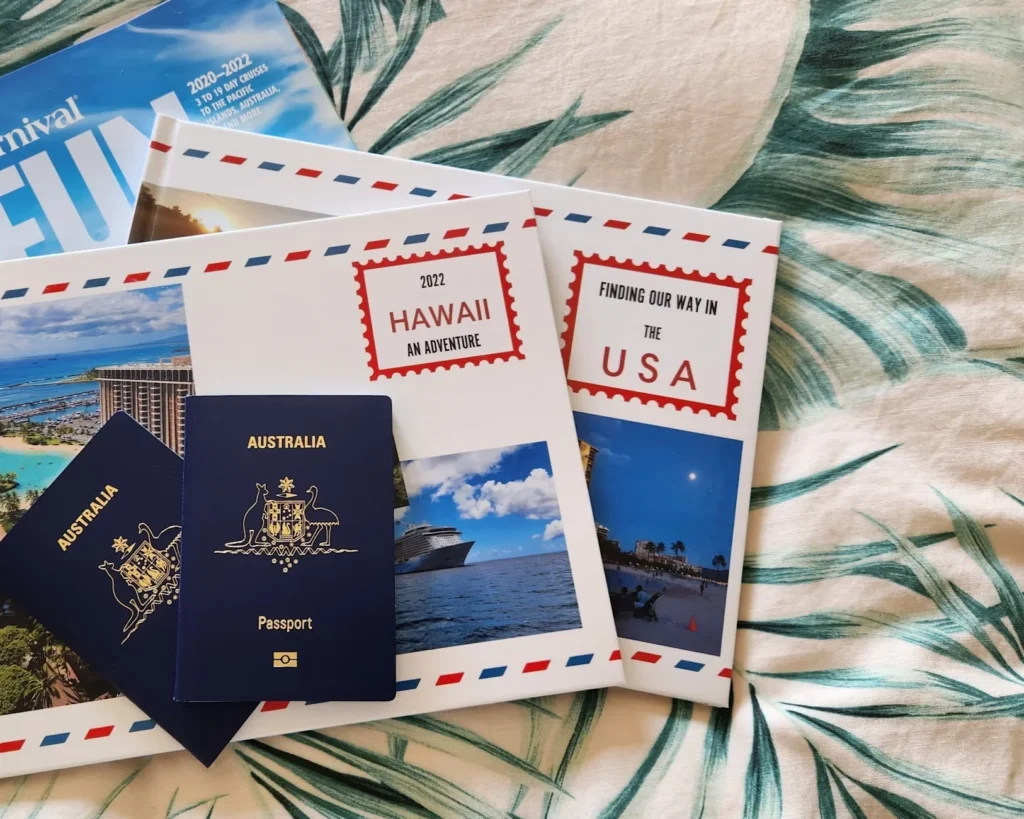
You’ll need:
- Documents proving your Australian citizenship
- Your full and original Australian birth certificate
- Documents showing your photo, signature, and current address
- Documents proving any change of name or gender
- 2 passport-sized photos that meet our photo guidelines.
If you were born overseas and your Australian citizenship document does not show your gender or place of birth, you must provide your birth certificate. If you can’t provide your birth certificate, provide your foreign passport.
Step 2. Ask someone to be your referee or guarantor
When you apply for a new passport, you need to find someone to confirm your identity. Depending on how you apply, this will be a guarantor or referee.
If you’re completing an online form, you need a ‘referee’. A referee doesn’t need to sign anything, but must be willing to confirm your identity if we contact them.
If you’re completing a paper form, you need a ‘guarantor’. The guarantor must sign section 11 of your application form and the back of one passport photo. They must use a black pen and write, ‘This is a true photo of [your full name]’.

Step 3. Complete the application form
There are 2 ways to complete a passport application form. You can complete an online form or a paper form from a post office.
Online form
1. Go to application portal
2. Complete the online form.
3. Download and print the completed form. When printing, use:
- A4 size paper
- portrait orientation
- black ink
- ‘Fit to page/printable area’ in your printer settings.
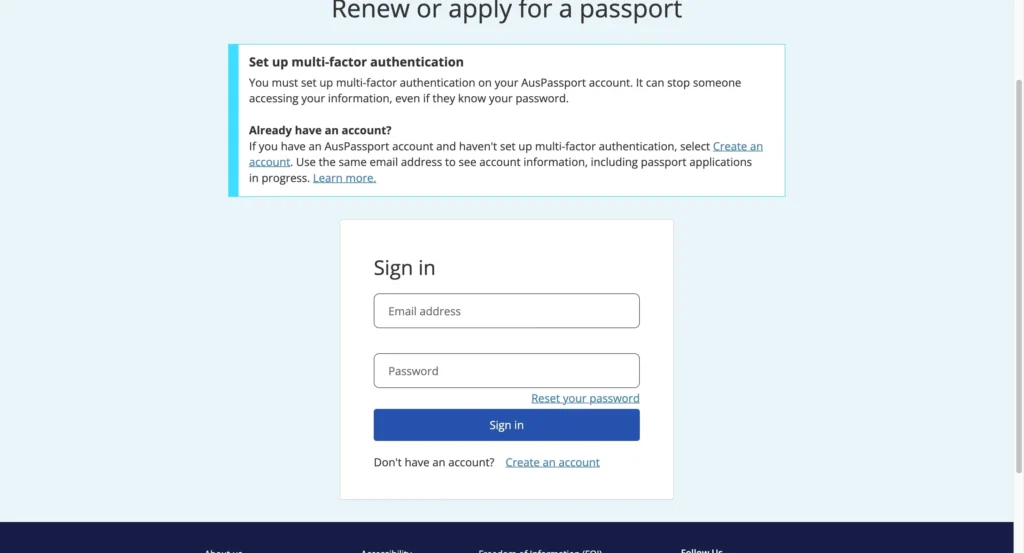
4. Gather your documents, including your completed form, passport photos, and original identity documents.
Step 4. Lodge your application and pay the fee
Whether you complete an online or paper form, you need to lodge the application at a participating post office.
You also need to pay the fees.
Bring your completed application form, passport photos and original identity documents. If you’re unsure about whether to take the OET or PTE for your healthcare career or studies abroad, you can read this detailed comparison: OET vs PTE: Should You Choose OET Or PTE For Your Career?.
If you’re in Australia and have a current passport, it will generally be cancelled when you lodge your passport application. This means you won’t be able to use it in connection with travel or identification.
Any remaining validity will not carry over to your new passport. Your new passport will be valid from the date it’s issued.
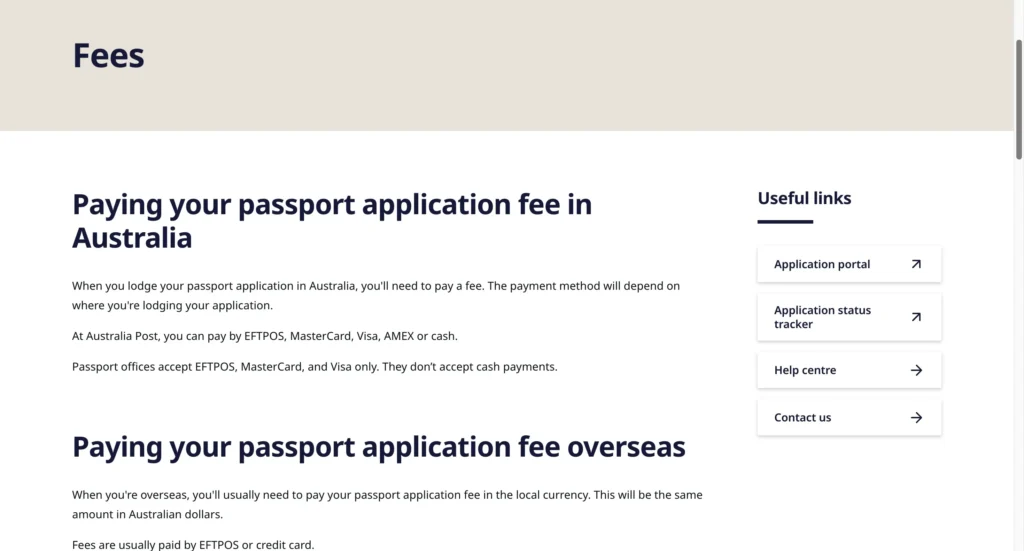
Step 5. Wait to get your passport
Routine processing

Once you’ve lodged your passport application, you can check it status
Allow at least 6 weeks from lodging your application to get your new passport. To find out how long it might take to process your application, you can use our passport timeframe estimator.
Faster processing
If you need your passport quickly, you may be eligible for faster processing for an extra fee.
There are 2 options for faster processing:
- Priority (2-day processing) service: we process your application within 2 business days of receiving it.
- Fast Track (5-day processing) service: we process your application within 5 business days of receiving it.
Your application must be complete, including all supporting documentation, to qualify for faster processing.

Delivery and collection
When your passport is ready, we’ll send it by Registered Post.
We’ll email you when we send your passport. We’ll also send you an SMS message with a Registered Post tracking number. Once sent, your passport should arrive in about a week.
If you need your passport sooner, you can choose to pick it up from your nearest passport office
Police checks
It costs $47 AUD and can be paid by credit card.
At least one primary documents:
- Passport
- Driver’s license
Other potential documents:
- Credit card
- Australian Marriage Certificate
- Property Lease Agreement
- Bank Statement
- Utility bills
Step 1: You go to the Australian Federal Police website and select get a police check and follow the instructions on the screen to start.
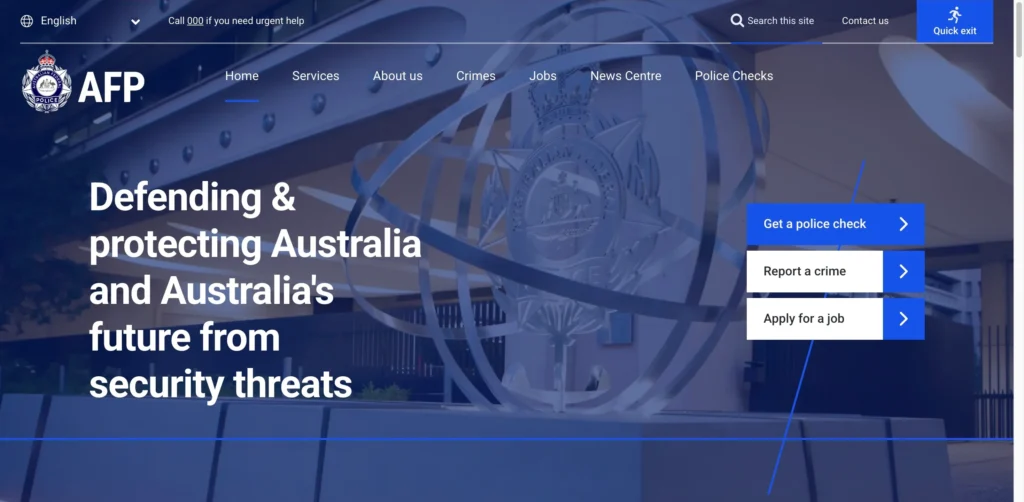
You need to select at least one primary document and some more primary or secondary documents until you have at least 100 points. Fill in your details, such as your name date of birth and email.
For the purpose of police check, it’s important to pay attention to filling in this part correctly. If your police check is for migration purposes you should select Commonwealth employment. Then, go to purpose of the check, choose 33, which is for immigration or citizenship.
Check your information is right, then go to the next step.
Step 2: Upload the documents, you can make a payment and wait for your Australian police check.
They will send you payment receipt and digital certificate via email when they have completed the check.
- Health Examination:
The majority of visa applicants are required to meet the health requirement. Moving on , you might need to go through various health examinations to confirm you meet the health requirement. Consequently, a Medical Officer of the Commonhealth (MOC) will assess the results of your examinations. Suppose you have a critical medical condition.
What health examinations you need:
- Permanent and provisional visa applicants
Generally, permanent and provisional visa applicants need to have these health examinations.
- Additional tests
You need to have additional tests when you attend your appointment if any of the below situations apply to you.
You may also need further tests if we identify a health condition when you have your initial health examination or during the visa application process.
- Temporary visa applicants
The examinations you need depend on:
- what visa you are applying for
- how long you plan to stay in Australia
- what level of TB risk we think your country poses
- whether we think your health is of special significance, based on what you plan to do in Australia
- any special circumstances
- whether any significant medical conditions were found when you were examined or during the visa application process
- Generally, temporary visa applicants need to have these health examinations:
If you have been in Australia in the last 28 days, we include any time you have already spent in Australia when we work out your length of stay for health requirement purposes.
- Additional tests
In some situations, you might need to have more tests.
When you attend the panel clinic they will ask you whether you plan to apply for a permanent stay in the next 6 to 12 months. If yes, they will ask if you want to be assessed for a permanent stay. You will have to complete more examinations if you do. You will have to pay for the extra examinations.
English tests
The department accepts test scores from the following tests that are undertaken at a secure test centre:
| Type of test | Location | Cost |
| English Language Testing System (IELTS) | IDP Sydney
Online (at-home) English language tests
|
$150 AUD – $400 AUD |
| Cambridge C1 Advanced Test (C1 Advanced)
|
Pearson Test Centre Melbourne | $253 AUD – $299 AUD |
| Pearson Test of English Academic (PTE Academic)
|
ETS Brisbane Test Centre | $475 AUD |
| Occupational English Test (OET)
|
OET Melbourne Centre | $587 AUD |
| Canadian English Language Proficiency Index Program General (CELPIP General)
|
CELPIP Centre Sydney | $290 CAD |
| LANGUAGECERT Academic Test (LANGUAGECERT Academic)
|
Online (at-home) English language tests
|
US$135.00 |
| Michigan English Test (MET), including Single Section Retake (SSR)
|
Online (at-home) English language tests
|
$102 AUD – $215 AUD |
| Test of English as a Foreign Language Internet-Based Test (TOEFL iBT)
|
Navitas English Test Centre
|
$200 AUD – $250 AUD |
Skills assessment / licensing
Skill Assessment
A skill assessment is the first step for most skilled migration visas in Australia. It’s an evaluation process that ensures your qualifications and work experience meet Australian standards for your nominated occupation. Each assessing authority has specific criteria for evaluating your qualifications and experience, and you must meet these criteria to pass the assessment. This crucial step determines whether you’re eligible to proceed with your visa application.
There are several visa types that require skills assessment, including General Skilled Migration visas such as Subclass 189, 190, and 491. Employer-sponsored visas like Subclass 186 and 494 also require assessments. Additionally, certain streams of the Subclass 482 (Skills in Demand) visa for mandatory occupation, as well as the Subclass 485 Post – Vocational Education Work stream, also require skills assessments.
The Assessment Process
Each occupation has a specific assessing authority that evaluates whether your skills meet Australian standards. The Authority checks your qualifications and experience against the requirements for your nominated occupation. This thorough evaluation ensures that your professional background aligns with what’s expected in the Australian job market.
It’s your responsibility to contact the assessing authority and apply for assessment unless you have a representative doing this for you. The results must be included in your visa application or Expression of Interest. Each occupation has its own specific assessing authority, and while some occupations may have multiple authorities to choose from, most have only one designated authority.
Visas
You might need a skills assessment if you apply for the following visas and streams.
There are three main types of skill assessment available. The general skill assessment is used for the most skilled visas, while the employer sponsor skill assessment is specifically employer-sponsored visas. The provisional skill assessment is designed for subclass 485 visa applications. You should apply for the appropriate type based on your visa category.
General Skilled Migration (GSM) visas
To be invited to apply for a points tested visa, you must have nominated an occupation that is on the relevant skilled Skilled occupation list for that visa subclass.
Applicants must first receive an official invitation to apply for a skilled migration visa, typically through the SkillSelect system. Without this invitation, you cannot proceed with your visa application.
When you submit your visa application you will need to provide evidence that you have a suitable skills assessment for your nominated occupation. You must have obtained a skills assessment by the time you are invited to apply.
Your skills assessment must also be valid at the time you are invited to apply for a points tested visa.
Skill Assessment Validity
Skill Assessments are valid for three years maximum from the Department of Home Affairs perspective. If your assessment states a shorter validity period, you must follow that timeframe. If it states longer than three years, it’s still only considered valid for three years from the assessment date. Always ensure your skill assessment is still valid when you lodge your visa application.
Getting a Skill Assessment
Step 1: Contact the assessing authority
Contact the relevant assessing authority for your occupation. Check which skills assessing authority is the correct one for your nominated occupation and organise your skills assessment well before you apply for the visa.
Each assessing authority has its own procedures, timeframes and charges. The assessment of your qualifications and experience by the assessing authority can take some time and can vary between different authorities.
Step 2 Receive your assessment
Provide a scanned certified copy of the suitable skills assessment with your visa application. If you don’t get a positive assessment result you cannot apply for a skilled migration visa.
Certified copies, translations, proof of funds
Certified copies
When you apply on paper you must provide certified copies of your documents.
Have your copies certified by someone who:
- is an Australian citizen
- is not related to you (by birth, marriage or de facto relationship)
- works in one of the occupation listed below
If you are applying from outside Australia and you don’t know an Australian citizen, have your documents certified by someone who:
- is a citizen of the country you are in
- is not related to you (by birth, marriage or de facto relationship)
- works in one of the occupation listed below
If the certifier has known you for at least one year, they can:
- complete an identity declaration for you
- confirm your photographs are genuine
- Make a copy of the original document.
- Take the original document and your copy to the certifier.
- They will check if your copy is the same as the original.
- On a single-page document, the certifier must write or stamp, ‘This is a certified true copy of the original as sighted by me’
- On documents with more than 1 page, the certifier must write or stamp ‘I certify this and the following [number of pages] pages to be a true copy of the original as sighted by me’ on the first page and initials on all other pages.
The certifier must also write or stamp on the copy:
- their signature
- their full name
- their occupation
- their phone number
- the date
- their address (optional)
Translations
All Australians have the right to communicate and engage with the Australian Government and other essential services, regardless of their cultural and linguistic backgrounds.
The department supports equitable access to essential government programs and other key services. We deliver language services for migrants to Australia and people with limited English skills.
TIS National
The Translating and Interpreting Service (TIS National) is a language service provided by the Department of Home Affairs.
TIS National services are available anywhere in Australia in more than 150 languages. Interpreting services are available 24 hours a day, every day of the year.
TIS National delivers the Free Translating Service and the Free Interpreting Service on behalf of the Australian Government.
Learn more about TIS National
Free Interpreting Service
The Free Interpreting Service (FIS) provides easy access to key services for people with limited English skills. This is important for conversations about technical, legal or health topics.
Learn more about Free Interpreting Service
FreeFree Translating Service
A lot of migrants to Australia have access to the Free Translating Service. This service helps access to employment, education, and community engagement.
Learn more about Free Translating Service
Proof of funds
When applying for any type of Australian visa, your proof of funds serves as the backbone of your application. The Department of Home Affairs requires applicants to show clear financial evidence to ensure that they can cover living, travel, and education expenses in Australia without relying on public funds. Submitting accurate and well-organized financial documents for Australia can make or break your visa application. It reassures immigration officers that you are financially prepared for your stay, whether short-term or long-term.
Here’s why these documents are so important:
- Proving financial capacity: You must show you can afford living expenses such as housing, food, healthcare, and transport.
- Tuition and study costs: For student visas, this includes proof that you can pay tuition fees and other academic expenses.
- Sponsor’s stability: For family or dependent visas, your sponsor must show their ability to support you financially.
- Assurance to authorities: Your bank statement for Australian visa helps verify you won’t face financial hardship or depend on government aid.
Without strong financial documentation, your visa application could be delayed or refused due to concerns about insufficient funds.
- Each visa category in Australia has its own financial requirements. Here’s a breakdown of the main types that require proof of funds Australia:
- Student Visa (subclass 500): Requires proof of sufficient funds to cover tuition fees, living costs, and travel expenses.
- Work Visas (e.g., Temporary Skill Shortage (TSS) Visa subclass 482): While less financially demanding than student visas, applicants must still demonstrate financial stability.
- Visitor Visa (subclass 600): Requires proof that you can afford your stay without resorting to employment in Australia.
- Family Visa (e.g., Partner Visa subclass 820/801): Requires evidence of your and/or your sponsor’s financial situation to prove the ability to support the applicant.
- Permanent Residency Visas (e.g., Skilled Independent Visa subclass 189): Though primarily skill-based, financial stability can still be an aspect of consideration.
| Visa Type | Financial Proof Required | Examples |
| Student Visa (Subclass 500) | Proof of tuition, living, and travel expenses | Bank statements, loan letters, or sponsor support |
| Work Visa (e.g., Subclass 482) | Demonstrate ability to sustain yourself until income begins | Recent pay slips, savings |
| Visitor Visa (Subclass 600) | Evidence of funds for accommodation and return travel | Bank balance, hotel bookings |
| Family or Partner Visa (Subclass 820/801) | Sponsor’s financial ability to support the applicant | Sponsor’s income, bank statement, ITR |
| Skilled or PR Visas (Subclass 189/190) | Optional, but strengthens credibility | Bank statement, investment proofs |
Financial Documents for Australian Visa Checklist
Before submitting, ensure your financial folder includes:
- Bank statements (3–6 months, verified)
- ITRs (last 2–3 years)
- Pay slips and employer letter
- Proof of savings or investments
- Loan sanction letter (if applicable)
- Affidavit of support (for sponsored applicants)
- Property or asset proof (optional but helpful)
What should I do before landing?
Surely, the first stage when arriving in Australia is excitement. Before you travel and immediately after you arrive in the country, you’ll be super excited and optimistic. Most people would walk around, take photos, and show them on social media. But life isn’t rainbows and sunshine.
When preparing for your move, consider how you will ship your belongings to Australia. You can send your personal items or effects by air, sea, or post, depending on your budget and how quickly you need your belongings to arrive. Each method has its own advantages, so choose the one that best suits your needs.
But after the initial excitement, you’ll go through the second and third stages, which may happen after 6 or 12 months of migrating. Then, it is obviously important for you to make good preparations. There are a few things you can do to prepare and make your arrival as smooth as possible.
Apply for the Working Holiday visa.
It must be the top priority on the list. Working Holiday visa may be the first knowledge when you search the keywords “Settle In Australia.”
There are two types of Working Holiday visas: Working Holiday visa (subclass 417) and Work and Holiday visa (subclass 462).
Working Holiday Visa (subclass 417):
Overview:
- Age limit: 18 – 30 years
- Stay up to 12 months Work & Travel allowed.
- The study period last up to 4 months
- Travel to and from Australia as many times as you want
- do 3 months of specified work to become eligible for a second Working Holiday visa
- Cost: $670 AUD
You must:
- Hold a passport from an eligible country or jurisdiction
- Age allowed: 18 – 30 (or 35 years old for some countries)
- Apply online from outside Australia
- Not be accompanied by dependent children
- Apply on your own. You can’t include family members in your application
- not have previously entered Australia on a subclass 417 or 462 visa. If you have previously been in Australia on a subclass 417 visa, see the second Working Holiday visa.
Work and Holiday Visa (subclass 462):
Overview:
- Stay in Australia for at least 12 months.
- Work for up to 6 months.
- The study period lasts up to 4 months.
- Be able to travel to and from Australia as you like.
- Moreover, this visa could apply to ballot registration, and each person just registers only one for each year.
- The cost for ballot registration is $25 AUD.
You must:
- Age allowed: 18 – 30
- Proof of good background, no criminal record.
- Do not bring small children during travel and work in Australia
- You must have a diploma from a university, college, or training center or have completed at least 2 years of several programs, including College, University, Postgraduate, and Graduate certificates.
Get insurance.
Above all, insurance is a means to protect yourself from any unforeseen events. You are likely to lose all your money without insurance. PTE Magic would recommend you two types of insurance that could not be lacking in your journey in Australia.
Inevitably, health insurance could not be lacking in this list. It is highly wise to obtain health insurance, as unexpected events can occur that may lead to significant financial loss without it. Besides, travel insurance is also recommended for your valuables as you move around the country. If you are planning to study or immigrate to Australia, it is also important to be aware of PTE score validity and expiry dates for applying for PR or educational opportunities.
Banking
Consider which types of bank accounts you should open to save your time. Furthermore, searching the basics of banking in Australia is a need. There are three common types of bank accounts, including debit cards, ATMs, payment apps, and, more importantly, savings accounts.
But first, transfer some cash into Australian dollars for your arrival.
How to find the right house for you
Those who have relatives in Australia are such a blessing. However, for those who do not have relatives or acquaintances, you must decide where to base yourself first. Australia has so many great cities and regional areas; PTE Magic would point out five top cities that have the most population. You could reference the list below.
Here’s the list:
- Sydney (4,627,345)
- Melbourne (4,246,375)
- Brisbane (2,189,878)
- Perth (1,896,548)
- Adelaide (1,225,235)
- Hobart (128,557)
- Darwin (89,905)
Sydney and Melbourne are perfect for those who want to visit tourist attractions. Adelaide and Perth are excellent locations for foodies. Brisbane is one of the places worth living in Australia because of the mild weather, so if you love the sunshine, this must be a choice for you.
Then, researching accommodations or houses in Australia – there are a lot of property websites available listing options. Most also have brokers or agents who help you choose the right place.
Create your CV/resume.
Finding a job requires considerable effort not only in your hometown but also in another country. Hence, equip yourself with a few things you can do before you arrive to make the process straightforward.
Having your CV ready when you arrive will save you time and stress. Try to keep your CV to one page and highlight only the sections that fit the role you want to apply for. There is a common mistake that most people frequently encounter. Your photo images must be polite photos with appropriate costumes. Please, do not be a selfie.
After completing all of this, save your CV in PDF format and email it to potential employers immediately, along with a cover letter. You should also consider contacting companies directly through their websites or email to express your interest and showcase your skills.
Start practicing for job interviews.
Practicing not to be nervous when you have a face-to-face interview is critically essential. Above all, most of the recruiters would estimate your confidence level and reliability in the job. To give yourself the best chance at success, be well-prepared to stand out when you meet prospective bosses and colleagues. In Australia, most interviewers would want to know who you are and what skills you can bring to this job.
Here are some helpful tips for being well prepared.
- Look online for sample interview questions and practice them in front of a mirror or friend to become a master.
- Learn how to ask insightful questions at the end of the interview. This is also one of the things that recruiters would consider you for in the interview.
- Be natural, be authentic, and be yourself.
How do I proceed after landing?
Get a SIM/eSIM & set your phone up
We all use phones like multifunctional tools. Most people who land in Australia’s airports have to use a phone to contact family, show a boarding pass, or catch a taxi. Besides, checking the coverage zones may be helpful depending on your intended destination to make sure you will have enough service and reception when traveling.
Here are some tips to change your phone:
- Get a SIM card at the airport: Researching all of the plans and coverage options and then heading directly to the provider’s store is the simplest approach to accomplish this; make sure to bring the passport with you. Additionally, PTE Magic suggests some websites that aid you in switching your phone.
- Telstra
- Optus
- Vodafone
- Use eSIM: To simultaneously avoid fraud and phone hacking, you should choose this method.
- Airalo
- Optus.
- Holafy
- Jetpac
Open or activate your bank account
Australia has five main banking institutions:
- ANZ Bank
- Commonwealth Bank
- NAB (National Australia Bank)
- Westpac
- CommBank.
Remember that your company will not be able to pay your salary without a bank account.
Secure housing (applications, references, bonds)
Many Australians don’t have any other option than renting before being able to buy a home. But if you have never rented a property before, you might feel a bit stuck without rental references from previous landlords. The good news is that you can still demonstrate that you would make a good tenant.
Rental applications:
It is no secret that the rental market across a lot of Australia can be highly competitive. When attending a property inspection, it is not uncommon to find yourself looking through an apartment with dozens of other eager renters. So,what makes a winning application?
Here are some rental application tips to ensure you don’t get left behind when it matters most.
Cover letter
Most landlords don’t request a cover letter, but preparing one can set you apart from other applicants and increase your chances of securing a rental.
Write a few paragraphs about who you are, what do you do for a living and perhaps the reason for your move. Try to be professional but not overly formal that your personality doesn’t shine through. Give a brief overview of your rental history and make mention of any special circumstances such as pets.
Rental history
Your rental history is critical. This includes your current and previous rental information such as the address of the rented premises, lease start and end dates, amount of rent and details of the property owner/manager. You should also have a rental reference from the outgoing property manager to attach to the renter profile. This saves time for the ingoing property manager assessing your application suitability.
Reference letter:
Rental reference is simply a letter or document that vouches for your ability to meet your financial commitments, be depended on and can be trusted.
A reference needs to be written by somebody that is associated with you. Ideally, this would be a previous or current landlord. But if you are a first-time renter with no references, then you can ask your roommate, friends or even your neighbours to provide one.
The aim of a reference is to give your potential future landlord an idea of who you are. So don’t hesitate to provide at least two. These references will support them to know what they can expect if they were to have you as a tenant at their property.
Finally, photo identification, pay slips and medicare cards are obligatory things for renting.
Apply for a TFN (or ABN for contractors)
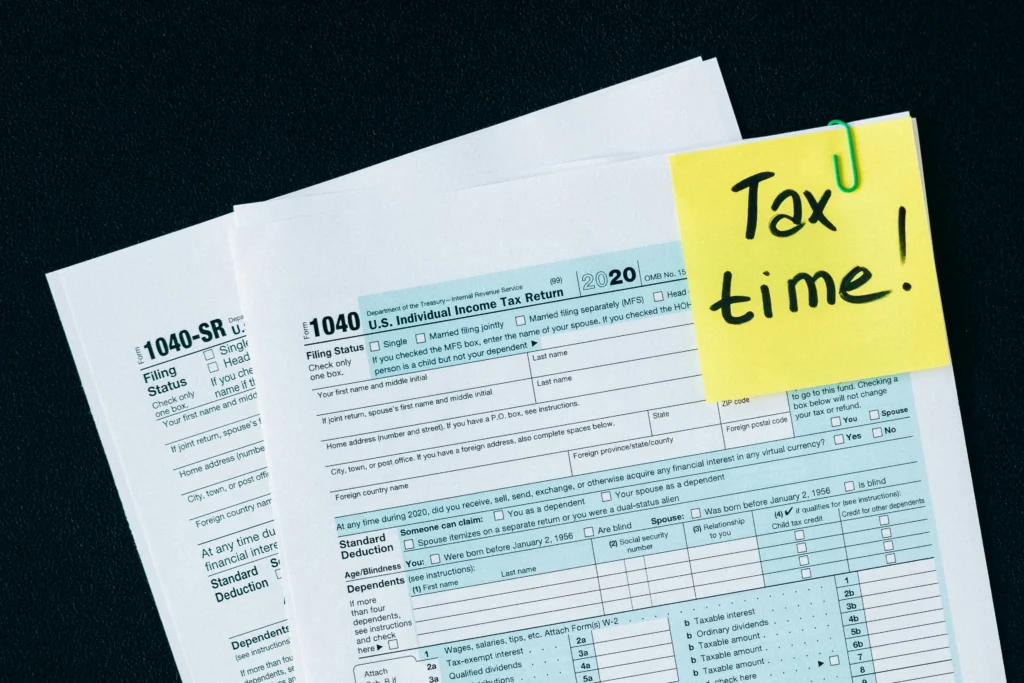
It can also save you from paying too much tax if you open a bank account. The first thing that you need to do is head over to the website of Australian Taxation Office (ato.gov.au) to register to apply for a Tax File Number (TFN).
Step 1: Clicking on the menu in the left screen and finding the “Individuals and families” category.
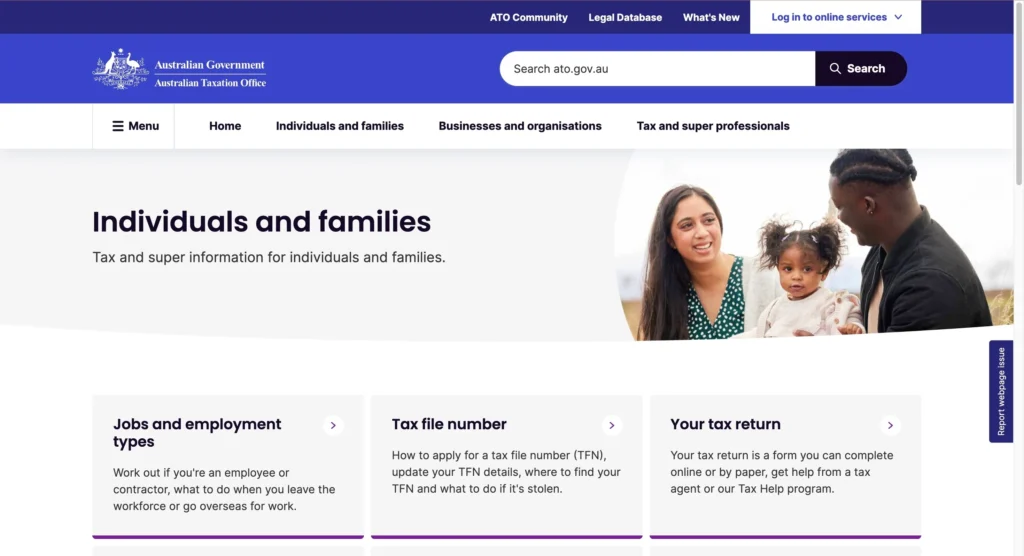
Step 2: Tax File Number, then click on “Apply for a TFN.”
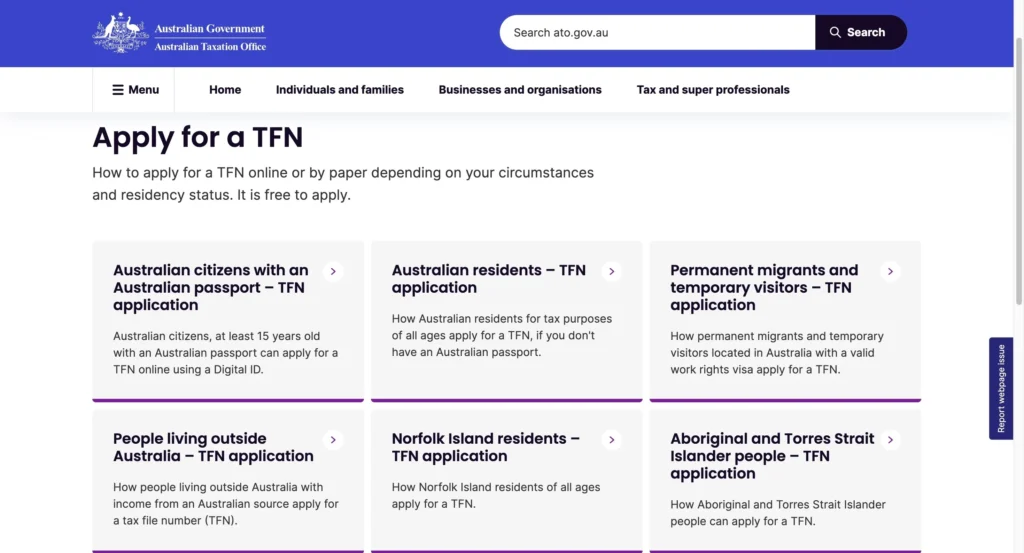
Step 3: You will choose “Foreign passport holders, permanent migrants, and temporary visitors – TFN application.” This is the category for most people who are in Australia on a visa.
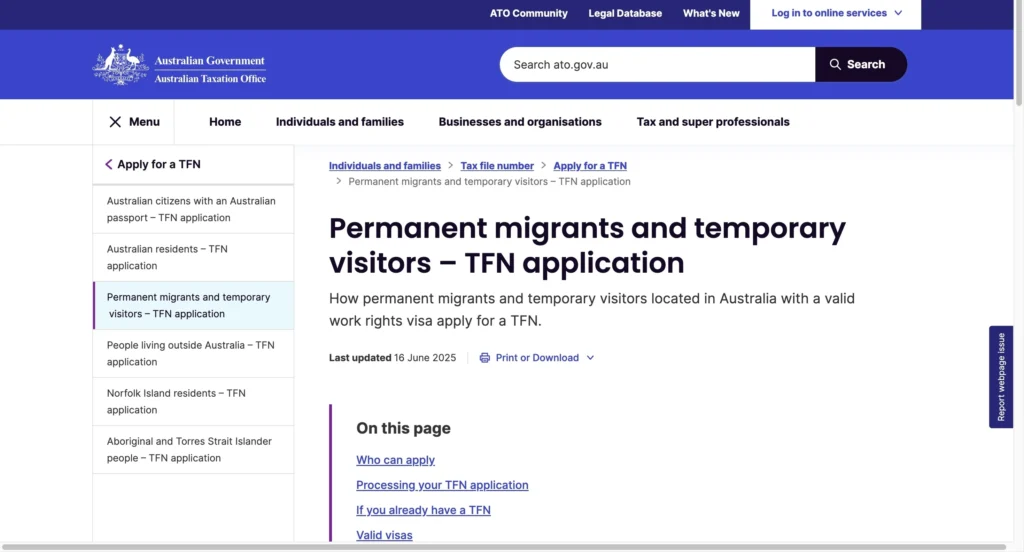
Step 4: Finally, you will see the button: “Apply online for a TFN using the IAR.” Later on, ATO TFN application or enquiry would turn up to start applying. Please, read carefully the information in there.
Convert/recognize your driver licence
If a driver’s license is needed, go to the roads authority office that is closest to you. There are three basic steps to get a driver license.
- Getting a learner’s permit online: The first thing you need to do is apply for the learner permit test. To get it, you will need to pass the test on VicRoads ( https://www.vicroads.vic.gov.au/) and do an eye test. The test is free in most of the states.
- Practical Driving Test: In most states, you will need to complete 120 hours with the instructor or the supervisor who has the full license.
- Hazard Perception Test: Once you have experience on the road, you must take the Hazard Perception Test (it costs about $20 each time).
- After a process, a Provisional Driver’s License is in your hand.
If you have a driver’s license in your country, you can use it for up to six months. After that, you could convert your driver’s license from an Australian driver license.
Understand superannuation & choose a fund
What is superannuation ?
According to the Australian Taxation Office (ATO), over the course of your working life that you live on once you retire. Superannuation is remarkably important when you need a good amount of money to live off when you’re no longer working.
For most people, super begins when you start work and your employer starts paying a percentage of your salary or wages into your super fund. Your employer pays your super on top of your wages.
You can generally choose what fund your super is invested in, , and how it is invested.
You need to keep track of your super, checking that your employer is contributing the right amount and ensuring it’s most effectively invested for your circumstances.
Find a job (job boards, recruiters, networking)
In case you are well-prepared to get a job but it does not work out. Some people in this phase may feel disheartened for you; work programs are available that are designed to lessen stress. The Global Work & Travel Co. and Work and Travel Company are a couple of options to consider. Additionally, you could find a volunteer job to get acquainted with the culture and local people. It’s truly useful to meet new people and gain experiences & knowledge.
Here are some websites to seek volunteer jobs:
Get some companions
Many people would struggle to make good friends at the first stage in Australia. You may be starting to get homesick, missing your hometown friends, and missing your family. Gradually, your mental health will go through ups and downs. You will think, “This is not the place for me.”
It’s completely normal when you feel isolated and lonely. Good things take time. Now, accepting cultural diversity is the first lesson when you move to Australia. You can research some bars and clubs to attend, such as a soccer club, a running club, or a rooftop bar. Just do anything to step out of your comfort zone and meet new people. Eventually, you will have someone neutral to talk to and someone who’ll actually try to listen, understand, and help you.
Discover Australia & build community
With useful knowledge in the above. It’s time to enjoy yourself in Australia. Let’s get outside with many stunning locations for sightseeing and taking photos. PTE Magic strongly recommends purchasing a hop-on/hop-off bus ticket to explore the country.
Profession-Specific Registration & Licensing
Some occupations require workers to hold specific VET credentials. These requirements are usually put in place by the Australian Government, or state and territory government authorities.
Healthcare
To work as a doctor or pharmacist in Australia, you need to apply for a visa issued by the Australian Government Department of Home Affairs. In this care, Skilled Independent visa (subclass 189) is appropriate.
In terms of registration, you need to go to the authority of the council that registered your professional.
Provisional registration.
The first thing is that you need a provisional registration. Provisional registration applies to people who are qualified for general registration and who are also required to complete a period of approved supervised practice in Australia before becoming eligible for general registration.
Up to 12 months provisional registration can be granted by the Board. The National Law states that provisional registration may not be renewed more than two times.
Fees.
Registration fees fund the work of Ahpra and the Medical Board of Australia (MBA) to keep the public safe. Each Board in the National Registration and Accreditation Scheme is responsible for meeting the full cost of regulating their profession, as there are no government or other subsidies to support this vital role.
Please note that: There are no fees for the registration of students.
Applying for registration
You can apply for registration and renew your registration online in the Ahpra portal.
Create or log in to your account to start an application, update your contact details, request a certificate of good standing or certificate of registration. If you need to change your principal place of practice or tell us about a notifiable event you can do so in the portal.
Here’s the link to Start application
Construction (White Card)
A white card (or general construction induction card) is required for workers who want to carry out construction work.
People who need a white card include:
- Site managers, supervisors, surveyors, labourers and tradespeople
- People who access operational construction zones (unaccompanied or not directly supervised by an inducted person)
- Workers whose employment causes them to routinely enter operational construction zones.
The white card becomes void if you haven’t carried out construction work for two consecutive years or more.
Hospitality (RSA/RCG)
To work in a place that serves alcohol or provides gambling services, you need to undertake training in Responsible Service of Alcohol (RSA) and/or Responsible Conduct of Gambling (RCG).
You must submit your own application in person – other people cannot apply for you.
The cost of the competency card is included in the course fee you pay for RSA or RCG training.
You must have done RCG training before doing ARCG training.
Eligibility
You must have
- Successfully completed an approved NSW RSA or RCG training course with an approved training provider
- Received an RSA or RCG interim certificate
- Not previously applied for a competency card.
What you need
- Your RSA or RCG interim certificate, issued by an approved NSW training provider within the last 5 years
- Your 100 points of ID documents – see the back of the interim certificate for acceptable document types
If you’ve changed your name from what is shown on your identity documents, you’ll also need to provide proof of your name change, such as:
- Australian marriage certificate (Registry issued)
- Overseas marriage certificate (with official translation)
- Change of name certificate (Registry issued)
- Proof of divorce (Family Court).
How to apply
- Complete your RSA or RCG training with an approved training provider.
- Get your RSA or RCG interim certificate from your training provider. If you have both, you only need to bring one to the Service NSW Centre.
- Gather your original identity documents.
- Visit a service centre to have your photo taken and submit your application.
Cost of Living, Budget & Timeline
Initial setup costs (bond, furniture, transport)
- Bond: A rental bond is money paid by the tenant/renter at the start of a tenancy agreement. It serves as financial protection for the landlord (lessor/rental provider) in the event the tenant/renter breaches the terms of the tenancy agreement.
Generally, the bond is four weeks’ rent, however it does vary by state and the amount of rent you pay.
- Queensland: Four weeks’ rent, negotiable if the rent if more than $700 a week;
- South Australia: Maximum of four weeks’ under $250 a week, six weeks if the rent is more than $250 a week;
- Victoria: Maximum of four weeks’ rent, negotiable if the rent is more than $350 a week;
- Western Australia: Four weeks’ rent, negotiable if the rent is more than $500 a week.
- South Australia: If your rent is $800 a week or less, the maximum rental Bond amount is the equivalent of four (4) weeks’ rent. If your rent is more than $800, the maximum rental Bond is the equivalent of six (6) weeks’ rent.
- Furniture: The necessary furniture includes a bed together with sofa and dining table.
- Basic furnishing can cost between $3,000–$5,000.
- Different brands and qualities affect the price range from $500 to $2,000.
- Initial setup may cost around $500–$1,000.
Planning your budget carefully when furnishing your first house allows you to buy essential items at reasonable prices. A breakdown of essential furniture and household goods follows including price estimates for both brand-new and used items is presented below.
| Item | New Price Range (AUD) | Second-Hand Price Range (AUD) |
| Bed frame and mattress | $500 – $1,500 | $100 – $500 |
| Sofa | $400 – $1,200 | $50 – $300 |
| Dining table and chairs | $300 – $800 | $100 – $400 |
| Coffee table | $50 – $200 | $20 – $100 |
| Wardrobe/Chest of drawers | $200 – $600 | $50 – $250 |
| TV stand | $100 – $300 | $30 – $150 |
| Desk and chair | $150 – $500 | $50 – $200 |
Transport:
- Around $150–$200 per month. Car Owners: Fuel, insurance, and maintenance totalling $300–$500 per month.
City comparisons (rent, transport, groceries)
Rent
The most costly place for housing in Australia is Sydney. Including utilities, it’s 61% higher than the cost in Darwin, which is the least expensive capital city.
Monthly rent in a 2 bedroom apartment* is likely to cost you around $694 AUD more a month in Sydney than in Melbourne. That rises to $1,020 AUD if you want to live in an expensive area. You can save a small amount when it comes to utilities, however. Gas, electricity and water are $48 cheaper a month in Sydney and broadband costs are around the same.
The cheapest major city for housing in Australia is Darwin. Overall, it’s 46% less expensive than in Sydney with rent being on average $1,557 cheaper a month. Almost all of the money you save is down to cheap rent though because utilities, Internet and other household goods in Darwin are among the most expensive in Australia.
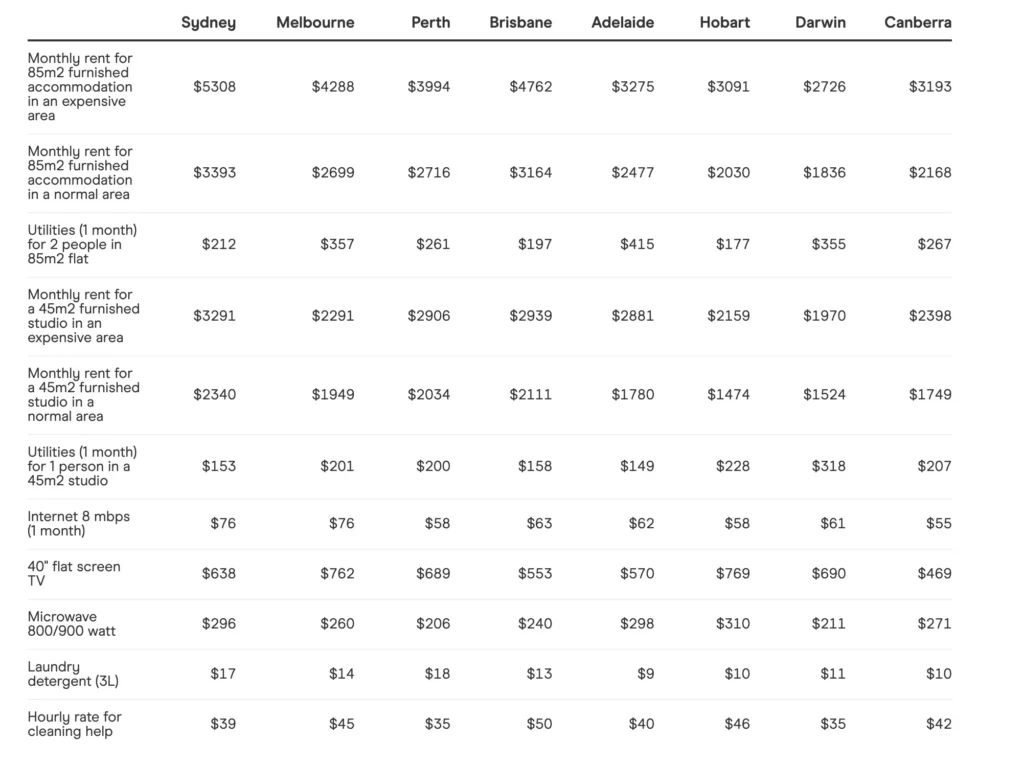
Transport: Cheapest cities for transport
- Darwin: The Northern Territory’s capital is on average the cheapest major city in Australia when it comes to transport. It’s 68% cheaper than in Sydney
- Hobart: Transportation in Hobart is 57% cheaper than in Sydney
- Adelaide: Coming in at just over the $100 mark, Adelaide is 48% cheaper than in Sydney.
- Canberra: Transport costs 25% less than in Sydney
- Perth: Transport costs 20% less than in Sydney
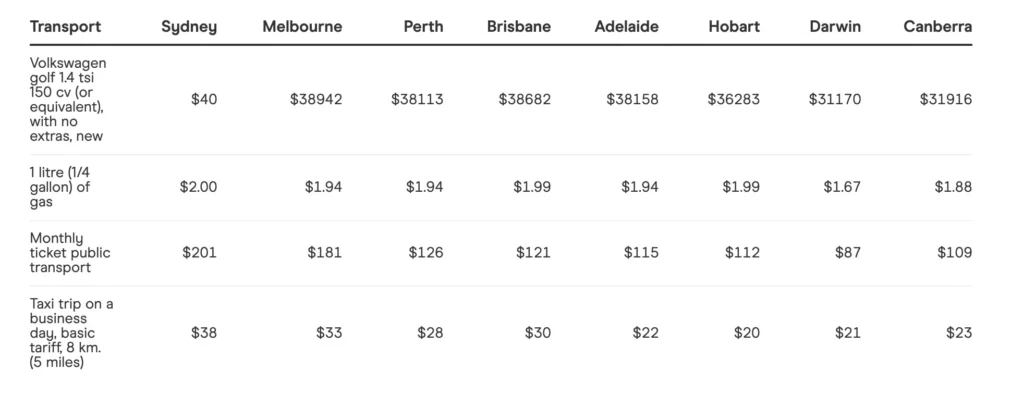
Groceries
People in New South Wales spend the most on groceries, with an average cost of $215 each week based on data from Finder’s Consumer Sentiment Tracker. People in Queensland and South Australia have the lowest average weekly cost of $186.
| States | An average cost |
| New South Wales | $215 |
| Queensland | $186 |
| Victoria | $212 |
| Western Australia | $196 |
| South Australia | $186 |
The cost of groceries is typically higher in regional and remote areas of Australia, where fewer supermarkets mean there is less competition.
Visa timelines & sequencing tips
Processing times vary for many reasons, including:
- If applications have all necessary supporting documents.
- If applications are lodged online or as a paper applications – applying online helps streamline processing.
- How quickly responses for further information are provided.
- How long it takes to receive information from external agencies, particularly relating to health, character and national security requirements.
- For permanent visa applications, the number of places available in the migration program.
- The complexity of a visa application.
- The number of visa applications increases or decreases.
- Changes to Ministerial Directions.
- Deciding older applications increases processing times.
Life in Australia: Health, Transport, Safety, Culture
Healthcare (Medicare vs private)
Australian Healthcare System, everything you need to know:
Medicare?
Basically, it’s the Australian public health insurance to access medical care for free or at discounted price.
What is covered by Medicare?
- Free or subsidised treatment by health professionals, such as doctors, specialists, optometrists and, in specific circumstances, dentists and other allied health professionals.
- Free treatment and accommodation for patients in a public hospital.
- 75% of the Medicare schedule fee for services and procedures for privately-insured patients in a public or private hospital. Hospital accommodation, theatre fees, medicines and certain other items are not covered.
Medicare cover?
Public hospital fees, that is, if you need to go to a hospital for an emergency, your hospital fees are covered by Medicare.
Bulk billing
Bulk billing occurs when medicare covers your total medical fee. There are some GPS that offer bulk billing services, but there are other GPS that don’t.
Medicare rebate
The Medicare Benefits Schedule (MBS) is a list of the medical services for which the Australian Government will pay a Medicare rebate to Medicare card holders, to provide patients with financial assistance towards the costs of their medical bills. Medicare rebates do not, and were never intended to, cover the full cost of medical services.
Private health insurance:
Private health insurance is an optional cover many Australians take out to give them more choice when it comes to their healthcare, as you can choose a level of cover to suit your needs.
Public transport & driving basics
Most importantly, Australians drive on the left-hand side of the road. When driving on Australia’s roads, always remember to:
- Wear your seatbelt. Fines apply for both the driver and passenger not wearing a seatbelt.
- Don’t use your mobile phone while driving, even when stopped at traffic lights. Harsh fines and penalties apply.
- Don’t drive under the influence of alcohol or drugs. Police conduct random breath and drug tests in Australia. The blood alcohol limit for drivers is 0.05. For those on a learner permit (L plates) or a probationary licence (P1 or P2 plates), the blood alcohol limit is 0.00.
- Drive at the speed limit at all times. Speed limits vary from 40 km/hr near schools to 100 km/hr or 120 km/hr on highways. Driving over the speed limit can lead to expensive fines.
Safety, scams, tenant rights
Types of scams
- You feel rushed
- You’re asked to pay using an alternative method
- The price seems too good to be true
- You found the property in a community group
How to keep yourself safe
- Do your search
- Don’t disclose personal information
- Check out properties in person
- Report the scam
Tenant rights
Renters have rights! When you rent a property through a registered real estate agent, they will follow all the essential steps to make sure you are protected legally. Knowing your legal rights as a tenant will result in a more positive experience.
Here are some of the most important rights that you should be aware of once you move in.
Right to a safe and healthy living environment
As a tenant, you have the right to live in a property that is safe and in proper condition. Your landlord is responsible for ensuring that the property is free from hazards such as mold, asbestos and pests, and that all appliances and fixtures are working.
Right to privacy
The real estate agent or landlord will arrange to inspect the property every 3-6 months. Legally, they must give you at least seven days’ notice before stepping into your home. You can decide whether you are there at the inspection or not.
Right to end the tenancy:
You have the right to end your tenancy at any time. There might be two reasons for this:
- Your landlord has violated one of the terms in the lease agreement: If this is the case, contact the rental rights body in your state or territory as listed below to help you either resolve the issue or to leave the property without fees being incurred.
- For a personal reason: If this is the case, you will need to pay fees for breaking a lease early. The amount of fees for breaking a lease will depend on the terms of your rental agreement, so please read it carefully before signing. You may have signed an agreement for a set period (for example, one year), but your agreement may also have options for renewal or move you to a month-by-month agreement at a set date.
Right to protection from discrimination
If you believe you have been discriminated against by your landlord, you can contact the Australian Human Rights Commission for advice or one of the legal bodies listed below.
Your responsibilities as a tenant
As well as rights, you also have some legal responsibilities as a tenant. These include keeping the property in a reasonable condition, paying your rent on time and following the terms of your lease agreement.
If you do not meet your responsibilities under the agreement, the landlord or real estate agent can give you a 14-day termination notice and you will need to move out within those 14 days.
Settling in: community, sport, volunteering
Australia is a country where there are high living expenses because of the high quality of life. According to international quality of life rankings, Australia often scores highly due to its strong infrastructure, good living standards, and healthy environment. However, there is no perfect place; Australia is a developed country and is having its problems.
There are still various downsides, such as high living costs, housing struggles, or teen crime. Furthermore, because of the high living costs, you should be careful about spending on an everyday basis, or you will be left with a massive debt.
FAQs.
How long does it take to become a citizen in Australia?
At the time of your application, you must have:
- Live lawfully in Australia for at least 4 years.
- Live in Australia for at least 12 months as a permanent resident to get a permanent visa.
- Spend no more than 12 months overseas in total during those 4 years, including no more than 90 days.
It is not just how long you were in Australia but where those days fall within the rolling 4-year window. To avoid this calculation, use the official residence calculator from the Department of Home Affairs.
Here is the link: https://www.homeaffairs.gov.au/
How’s the weather?
Depending on where you live, the weather might change a lot. Besides, Australians frequently tend to use an umbrella to go outside in the autumn and winter seasons.
Is there any documentation to prepare before landing?
Make copies of your important documents (certified copies are best for official documents), including:
- Passport
- Visa
- Identity Card (in your country)
- Medical Record Documentation (if necessary)
- School Record
- Driver license and international driver’s permit
- Airline tickets and itinerary
- Get extra passport-size photographs—these may come in handy
- Tax information, including any tax identification numbers
Conclusion
By way of conclusion, you may feel that to reside and work in the Land Down Under (another name for Australia) needs courage and grit. No matter where you’re at or what you’re facing, never stop believing in yourself. It is fortunate that you could develop your potential in this country. Staying updated with PTE Magic to keep an eye out for more information.
Last updated on 12/11/2025

My name is Moni, and I am a seasoned PTE teacher with over 6 years of experience. I have helped thousands of students overcome their struggles and achieve their desired scores. My passion for teaching and dedication to my student’s success drives me to continually improve my teaching methods and provide the best possible support. Join me on this journey toward PTE success!









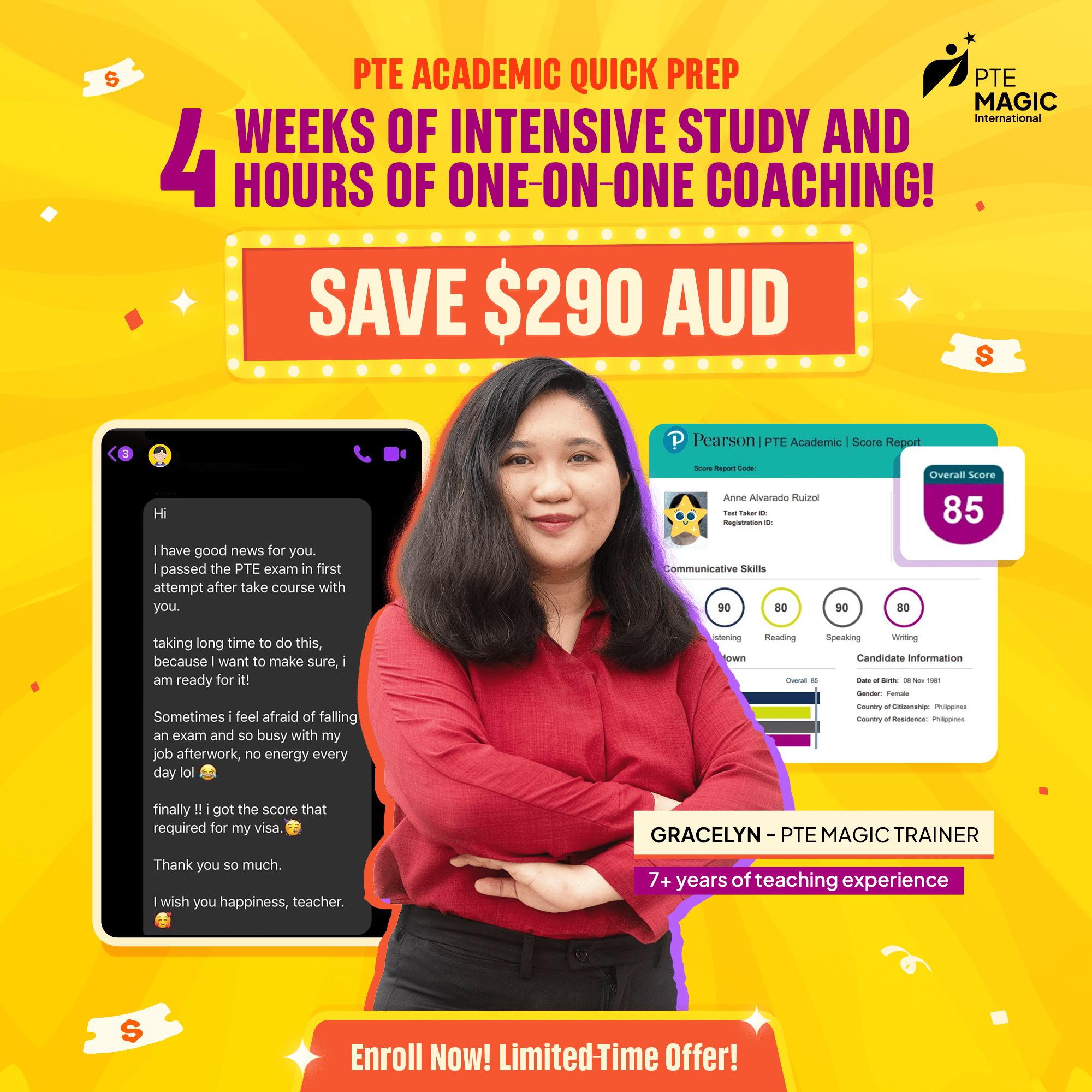
















I am a firm believer that the best teachers educate with their hearts not just their minds.
Moni | PTE MAGIC International Founder
Explore PTE
Tips & Tricks
Christmas in Australia is an experience of the kind in the world. Whereas in most...
Read more →Why Melbourne Is A Top Study Destination Melbourne is one of the most student friendly...
Read more →Why Sending Your PTE Scores Correctly Matters In the case of international students who are...
Read more →